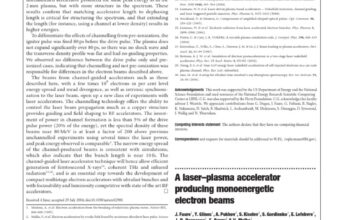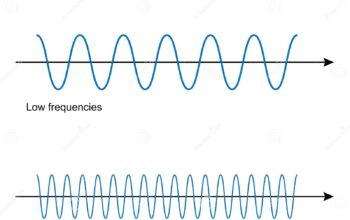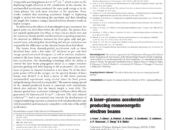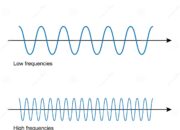In the realm of nanotechnology and molecular electronics, single-molecule junctions emerge as a tantalizing frontier, akin to a portal into the intricate dance of electrons at the nanoscale. These molecular constructs serve not merely as passive conduits for electrical currents; they are active participants in the intricate web of physical phenomena that define the world of matter at its smallest scales. The quest to unravel the properties and applications of these junctions is akin to deciphering an ancient text, rich with possibilities waiting to be unlocked.
At the heart of understanding single-molecule junctions lies the fundamental concept of electron transport. An electron functions as much more than a mere particle; it is an entity characterized by wave-particle duality, exhibiting probabilistic behavior that defies classical intuition. When one examines the phenomenon of electron flow through a single molecule—whose dimensions often hover around a few nanometers—the traditional laws of physics appear to bend and morph, revealing behaviors governed by quantum mechanics.
The architecture of a single-molecule junction can be likened to a tightly woven tapestry, where each strand represents the delicate interactions between the molecule and its electrodes. Typically, these junctions consist of a molecule positioned between two conductive electrodes, often made of noble metals like gold or silver. The choice of materials significantly influences the electronic properties of the junction. Gold, for example, renowned for its excellent conductivity and resistance to oxidation, is a preferred choice in many experimental setups, ensuring that the transport phenomena can be observed with minimal interference from extraneous variables.
When a voltage is applied across the junction, a plethora of exciting phenomena can manifest. The conduction mechanisms at play may include, but are not limited to, tunneling, thermally activated hopping, and resonant tunneling. The process of tunneling, in particular, serves as a striking illustration of quantum effects at work. It allows electrons to traverse an energy barrier that, classical mechanics would deem insurmountable, thereby revealing an almost magical quality inherent to quantum systems.
The exploration of single-molecule junctions is further enriched by the theoretical framework provided by the Landauer-Buttiker formalism. This theoretical model posits that the conductance of a junction can be fundamentally understood through the transmission probability of electrons across the molecular barrier. Each molecule has a distinct electronic structure, governed by its atomic composition and configuration, leading to unique transport characteristics. Consequently, the study of single-molecule junctions unveils an expansive landscape, akin to a vast expanse of uncharted territory being meticulously mapped out by intrepid explorers.
Integration of molecular functionalities within these junctions has the potential to revolutionize electronic devices. The utilization of single molecules to create logical and memory devices presents an opportunity to transcend the limitations of current semiconductor technology. In a world increasingly propelled by the voracious demands for miniaturization and efficient energy consumption, molecular-scale devices hold the promise of groundbreaking advancements. The ability to engineer molecules with specific electronic and optical properties could lead to bespoke junctions tailored for applications ranging from sensors to quantum computing.
Indeed, the advent of techniques such as scanning tunneling microscopy (STM) and atomic force microscopy (AFM) has facilitated the characterization and manipulation of single-molecule junctions with unprecedented precision. Such capabilities enable researchers to not only observe the transport properties in real-time but also to influence the structural and electronic features of the molecules themselves, thereby steering the pathway of innovation. It is as though researchers possess a sorcerer’s wand, capable of transforming theoretical constructs into tangible realities.
Despite the promise this field holds, navigating the labyrinthine pathways of single-molecule junction research is fraught with challenges. Issues of reproducibility, stability, and the scaling of single-molecule phenomena into practical applications remain prominent hurdles. It is vital to cultivate a thorough understanding of environmental influences—such as temperature fluctuations and chemical interactions—that may perturb the delicate balance of these systems. Approaching these challenges establishes a milieu characterized by both rigor and creativity, where scientific inquiry thrives on the interplay between controlled experimentation and theoretical innovation.
As research progresses, interdisciplinary collaborations spanning physics, chemistry, and materials science will play an increasingly pivotal role in unlocking the full potential of single-molecule junctions. Such partnerships create a fertile ground for the exchange of ideas, culminating in novel methodologies and applications that were once confined to the realm of imagination. Moreover, these alliances can help bridge the gap between fundamental research and practical applications, ensuring that the discoveries made in the laboratory can metamorphose into solutions for real-world challenges.
In conclusion, single-molecule junctions represent a captivating intersection of physics and technology, bearing resonance far beyond their diminutive size. They are emblematic of the broader quest for a deeper understanding of the quantum world and its myriad implications for the future of electronics. As researchers continue to decipher the code governing these molecular entities, society stands at the precipice of potential transformations, wherein the tiniest of junctions could indeed catalyze monumental advancements across technological landscapes.












